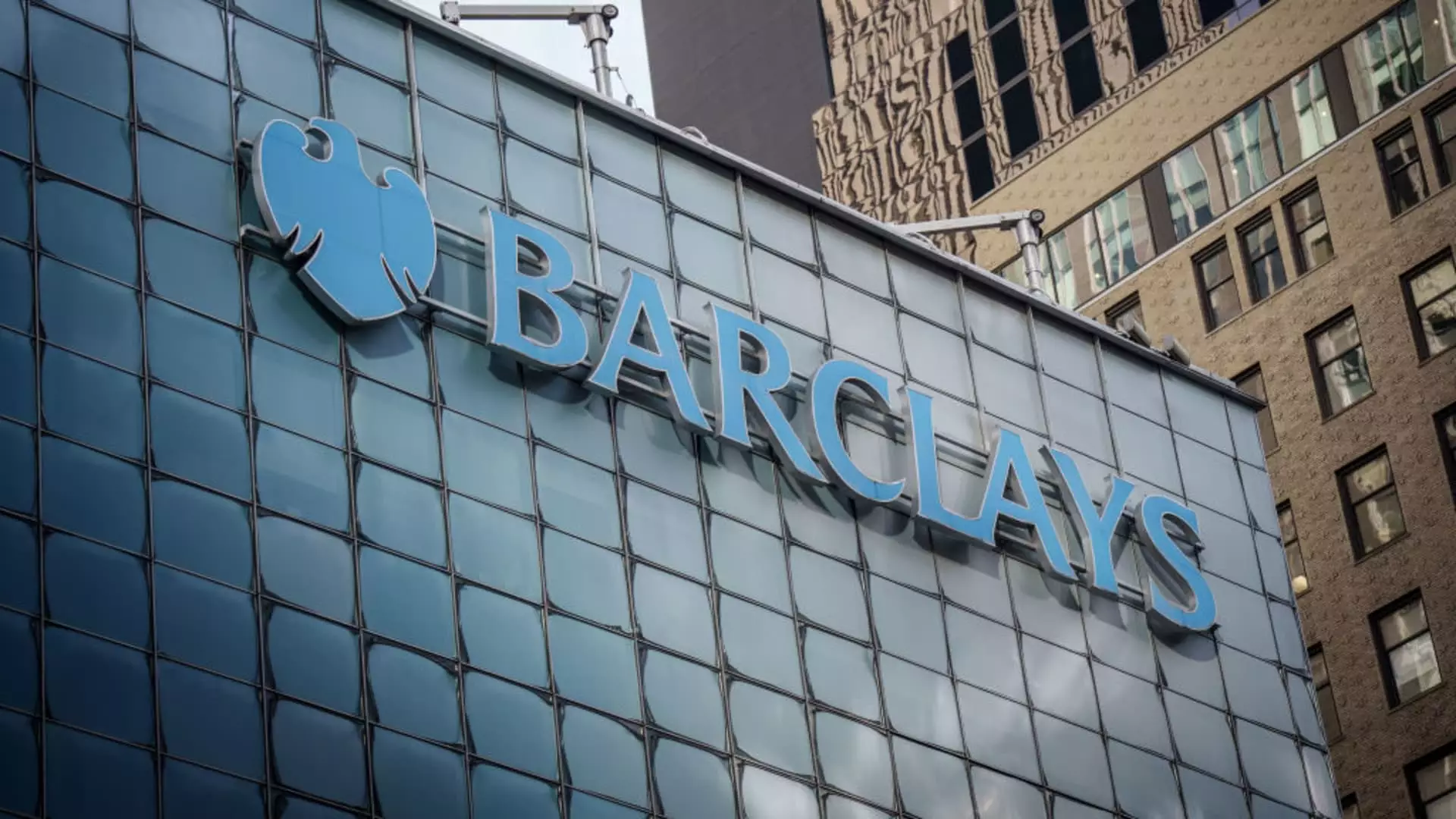Barclays, the British banking giant, has demonstrated resilience in the first quarter of the year, showcasing a robust financial performance that surpassed analyst expectations on both revenue and profits. The reported pre-tax profit of £2.7 billion ($3.6 billion) denotes an impressive 11% year-on-year increase, outpacing the expected £2.49 billion as per LSEG. This strong showing is crucial, especially in the context of a troubled global economic landscape influenced by geopolitical tensions and fluctuating markets.
The bank’s revenue also exceeded forecasts, reaching £7.7 billion, which eclipses the projected £7.33 billion by analysts. This indicates not only efficient management but also strategic positioning within the investment banking sector, which remains Barclays’ crown jewel. The 16% growth in income from investment banking to £3.87 billion underlines the division’s continued contribution to the bank’s overall success despite the pervasive uncertainty brought about by external factors.
Focused Investment Banking Amid Economic Uncertainty
The return on tangible equity, a critical measure of profitability, escalated significantly to 14% from a mere average of 7.5% in the previous quarter. This leap places Barclays in a favorable position to weather potential economic storms. C.S. Venkatakrishnan, Barclays’ CEO, is realistic about the challenges ahead, noting expectations of heightened market volatility. The ongoing back-and-forth nature of the markets necessitates a nimble approach to risk management for both Barclays and its clientele.
The risk landscape has undoubtedly changed with the advent of political maneuvers such as tariff initiation by U.S. President Trump. Barclays has been historically strategic in navigating its U.S. market exposure, which became substantial following its acquisition of Lehman Brothers’ investment banking divisions. This foresight in expanding into the American market may provide a buffer against the looming economic adversities signaled by the current administration’s policies.
Venkatakrishnan’s insights into the economic climate reveal that uncertainty tends to stymie decision-making at corporate and individual levels, which could foreshadow an economic slowdown. However, the bank remains poised to capture opportunities in risk management, as volatility continues to rise. The strong results in fixed-income trading highlight the efficacy of Barclays in capitalizing on market fluctuations.
Growth in U.S. Consumer Banking
The performance of Barclays’ U.S. consumer bank reveals positive strides, boasting a return on tangible equity of 9.1%—a significant improvement from 4.1% in the previous year. While income saw a marginal increase to £864 million in the first quarter, the decline in pre-tax profit, which fell by 7% to £55 million, suggests operational challenges despite favorable market conditions. This dichotomy presents a complex picture for the future of Barclays’ consumer banking segment as it grapples with both growth opportunities and profitability concerns.
Interestingly, market reactions have been mixed, with Barclays shares initially falling in response to trade war fears before rebounding to a year-to-date gain of 10%. This trajectory contrasts sharply with rivals like UBS, which have struggled under similar pressures owing to domestic concerns and market positioning. It reiterates Barclays’ adept handling of market narratives and investor confidence building.
Strategic Advantages and Market Dynamics
In the broader banking realm, Barclays is not without competition and pressure, particularly in the U.K. Following the complexities of Brexit and the related tariff adjustments, the British economy may experience unexpected growth avenues. With the prediction of U.S. tariffs on the European market temporarily suspended, Barclays stands to leverage its historical ties with the U.S. to forge advantageous trade agreements, potentially positioning itself favorably against domestic rivals like HSBC and Banco Santander.
As HSBC announces its plans to downscale its M&A and equity capital markets services, Barclays may find itself capitalizing on market share loss while continuing to enhance its operational footprint. Moreover, the challenges faced by Santander, including significant layoffs and branch closures, further accentuate the need for Barclays to remain vigilant and adaptable in a shifting banking landscape.
With the potential ramifications of global trade slowdowns lingering, along with burgeoning economic headwinds, Barclays’ current position of strength is both a testament to its strategic foresight and a challenge to maintain momentum amid uncertain conditions. They must balance their investment pursuits carefully while preparing for possible downturns in their major markets, particularly the U.K. and the U.S.
In a fiercely competitive landscape, Barclays’ ability to sustain solid performance while navigating through unpredictability will determine its path forward, highlighting the intricate dance of risk and reward in modern banking.

